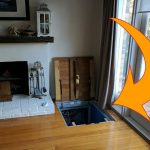700-Years Earlier
About 700-years ago, during the time of the Crusades, Christian forces in Acre knew that the Muslim army would soon attack them. The Christians wanted to hold onto the Israeli city, but there were no guarantees. The Knights Templar decided to build a secret passage beneath Acre that would lead to the ocean. The tunnel was so well concealed that it remained undiscovered for 700 years.
The Darkest Chapter of Europe’s History
The problems started in 1095. During that time, Pope Urban II gathered the Council of Clermont that was made up of Roman and Catholic members of the clergy, both ordained and non-ordained, in the South of France. At the meeting, the Christians agreed to fight against the Muslim soldiers. The Christians wanted to reclaim the Holy Land.
1189
The Third Crusade in 1189 and the Christian soldiers were unable to reclaim Jerusalem. Fortunately, all was not lost. In 1191, the armies managed to claim the city of Acre, and victory was theirs.
The Knights Templar
During the period of the Crusades, the Knights Templar were one of many religious, military groups. They took it upon themselves to keep the Holy Land safe while looking after the Christian pilgrims who made their way to the area. The group was founded by a Frenchman named Hugues de Payens during the early Crusades. It wasn’t until 1139 that the group was formally recognized. Pope Innocent II issued a decree that the Knights Templar had his protection. They also granted the members the rights to keep any treasures that they acquired in the Middle East.
Recognition
The group became famous in countries where Christianity was practiced. The more they were recognized, the more money came. They were instantly recognizable thanks to the way they were dressed. The colors were designed to do more than get them noticed. The colors had a symbolic meaning. The white cloth stood for their modesty and abstinence. The red crosses were a marker of martyrdom. They believed that if they died during the battle, it would guarantee their entrance to Heaven.
Construction
Thanks to their money, they were able to build strong buildings in the Holy Land. Many of these still exist today. Around this time, the order built up a base in the coastal city. They knew that losing their stronghold was a possibility if their armies were attacked. This was when they came up with a plan to protect their territory. They decided that they needed to build up walls that nobody could get through. By the 13th century, the fortress was considered the strongest in the city. There were two towers with walls that were 28-feet thick. There were two smaller towers that were topped with a gilded lion.
A Subterranean Passage
While building the fortress, the group decided that they needed a plan B. This was when they had a hidden subterranean passageway built underneath the building. If the castle was invaded, the group could flea underneath the building. It was also a way for them to get the supplies that they needed secretly.
1291
In 1291, things weren’t going too good for the Christians. The city had fallen and Khalil, the Egyptian sultan, ordered the city to be burned to the ground. This would prevent the Crusaders from regaining their territory. The fortress and other defensive strongholds were gone, and Acre was no longer a prized port. In fact, it was completely forgotten about until the mid-’90s. It was then that the settlement made headlines thanks to the subterranean tunnel.
1994
In 1994, a woman was having issues with her drains. She called a plumber to fix the problem. When he was looking for the issue, he found much more than a drainage system. She couldn’t believe it, but the Templars’ tunnel was directly under her house. When experts visited the passage, they found that the tunnel dated back to the Crusades.
The Tunnel
The tunnel was 1,150-feet long and ran under acre’s Pisan quarter. The passageway was made of stone, and the methods of construction changed from section to section. The lower portion was made of whittled down rock. Above that section was a tunnel covered by a layer of hewn stone. When the tunnel was discovered, the authorities decided to restore it. During the renovation process, electric lights and a walkway were added. Finally, in 1999, a section of the passageway was ready for tourists. In 2007, the entire tunnel was ready for people to explore. The fact that the passageway remained undiscovered was unbelievable. If it weren’t for that woman and her plumbing issue, the tunnel never would have been discovered. Unfortunately, the landmarks have changed over the centuries. The original fortress is now gone, and it has been replaced with a lighthouse. This 1, 000-Foot-Long Secret Passage Was Built Below Israel – And Forgotten About For 700 Years.


